Tashkent, Uzbekistan (UzDaily.com) -- A diverse group of journalists from 10 Eurasian countries recently embarked on a captivating journey to India at an invitation from the Ministry of External Affairs of India.
Comprising 21 journalists representing nations such as Armenia, Belarus, Kazakhstan, Georgia, Kyrgyz Republic, Uzbekistan, Mongolia, Turkmenistan, Tajikistan and Iran, the delegation’s week-long itinerary was packed with cultural immersion and professional engagements in both New Delhi and Hyderabad.
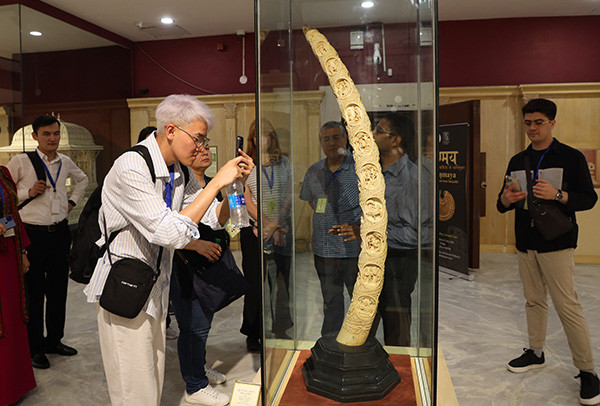
Their exploration began in New Delhi, where they delved into the rich tapestry of India’s history at the National Museum. Established in 1949 under the Ministry of Culture, this vast repository boasts over 200,000 works of art spanning more than 5,000 years, offering a glimpse into the country’s diverse cultural heritage.

Next on their itinerary was Humayun’s Tomb, a masterpiece of Mughal architecture and a testament to the artistic fusion of Persian and Indian craftsmanship. Commissioned in the 1560s by Emperor Akbar to honor his father, Emperor Humayun, this garden-tomb stands as an iconic symbol of India’s architectural prowess. Surrounded by the charbagh garden layout, adorned with pools and pavilions, the tomb’s grandeur is heightened by its towering 42.5-meter double dome clad in marble and crowned with pillared chhatris.
The delegation paid a visit to Taj Mahal in Agra. An awe-inspiring mausoleum of pristine white marble, the Taj Mahal stands as a testament to love and architectural mastery. Commissioned by the Mughal emperor Shah Jahan between 1631 and 1648 in memory of his beloved wife Mumtaz Mahal, it remains a jewel of Muslim art in India and a universally admired masterpiece of world heritage.
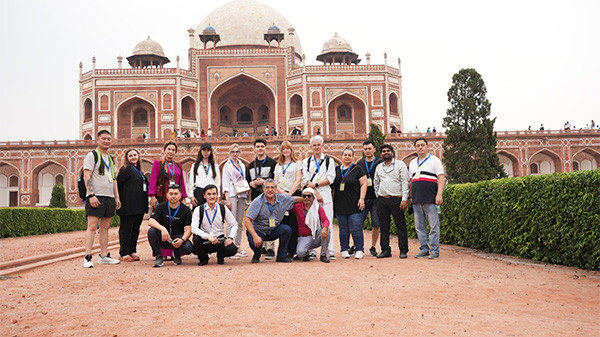
Situated on the right bank of the Yamuna River within a sprawling Mughal garden spanning nearly 17 hectares in Uttar Pradesh’s Agra District, the Taj Mahal was meticulously crafted over several years. Construction began in 1632 AD and culminated in 1648 AD, with subsequent additions including the mosque, guest house, and the grand south gateway completed by 1653 AD. Historical and Quranic inscriptions in Arabic script have helped to establish the chronology of its construction.
The project drew skilled artisans—masons, stone-cutters, inlayers, carvers, painters, calligraphers, dome builders—from across the Mughal Empire and beyond, including Central Asia and Iran. Ustad-Ahmad Lahori, renowned as the chief architect, oversaw its creation.
The Taj Mahal’s design embodies perfect symmetry, emphasizing bilateral balance along a central axis that organizes its principal features. Constructed primarily with brick-in-lime mortar veneered with red sandstone and adorned with intricate marble inlay work using precious and semi-precious stones, it contrasts strikingly with the red sandstone mosque and guest house within the complex.
Both structures feature expansive platforms atop terraces, with the mosque and guest house mirroring each other in design. Each boasts an elongated prayer hall divided into three vaulted bays, culminating in a dominant central portal adorned with white marble arches and intricately detailed spandrels featuring floral arabesques in stone intarsia, bordered with rope molding.
Beyond its architectural splendor, the Taj Mahal’s layout and ornamentation reflect symbolic meanings rooted in Islamic teachings and the celestial paradises described in Persian literature. Parchin kari, a technique using colorful relief and semi-precious stones, adorns its surfaces, lending it a subtle color-changing quality that varies with the light and weather—a celestial metaphor invoking the divine presence.
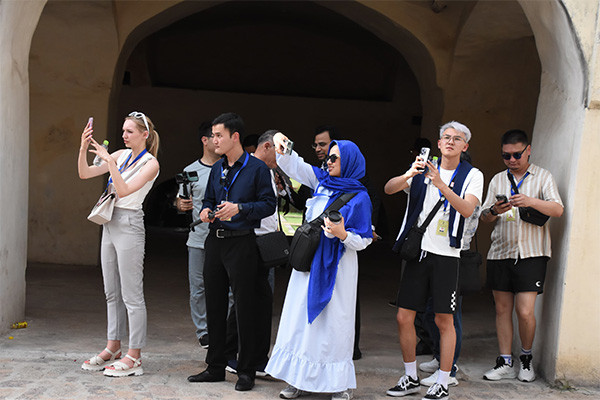
According to Ebba Koch, an esteemed art historian specializing in Mughal architecture, the Taj Mahal’s compound symbolizes both earthly life and the afterlife, split into two halves: the pristine white marble mausoleum and gardens representing spiritual enlightenment, and the red sandstone structures symbolizing worldly existence. The monumental gate serves as a transition between these realms, echoing the journey from mortal life to the divine.
One of the highlights of their visit was the Pradhanmantri Sangrahalaya, a unique museum dedicated to showcasing the lives and legacies of Indian Prime Ministers. This comprehensive complex condenses 75 years of history into an immersive experience spanning 7.5 hours. Divided into two main buildings, each with a welcoming reception, the museum features galleries devoted to every Prime Minister of India. These exhibits highlight their pivotal contributions and visions for the nation, alongside displays on the Constitution’s formation and memorable parliamentary debates.
In Hyderabad, the delegation explored the historic Golconda Fort, a fortified citadel and former city situated on the western outskirts of the city. Originally constructed with mud walls by Kakatiya ruler Pratāparudra in the 11th century, Golconda later passed into the hands of the Bahmani Sultanate during the first Bahmani-Vijayanagar War. Under Sultan Quli’s rule, it became the capital of the Golconda Sultanate, flourishing as a prominent trading center famed for Golconda Diamonds, extracted from nearby mines like Kollur. Today, the fort stands as a testament to its storied past, albeit in a state of picturesque ruin. Recognized for its historical significance, Golconda Fort was nominated for UNESCO’s World Heritage Site status in 2014, as part of the Monuments and Forts of the Deccan Sultanate.
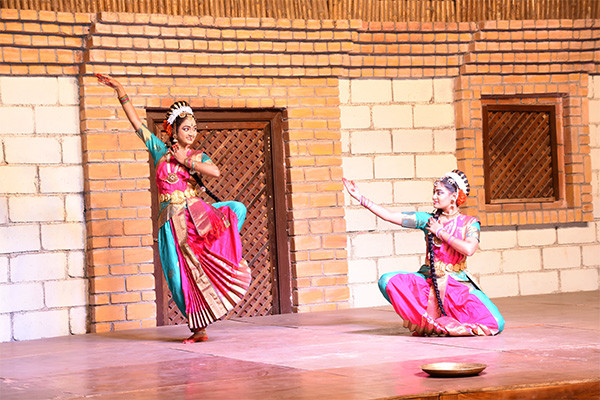
Another memorable stop was Shilparamam, a vibrant crafts village conceived to preserve and promote traditional Indian arts. Spanning 65 acres in Hyderabad’s hi-tech hub, Shilparamam provides a picturesque setting rich in cultural heritage. Throughout the year, the village hosts ethnic festivals celebrating various art forms and craftsmanship. Established by the state government, Shilparamam serves as a crucial platform for artisans, offering them a stage to showcase their skills and traditions. During the visit, local performers treated the journalists to Kuchipudi, an expressive form of Indian classical dance renowned for its grace and narrative artistry.
Ramoji Film City stood out as a captivating highlight on the journalists’ itinerary, sprawling across an impressive 674 hectares. Recognized by Guinness World Records as the largest film studio complex globally, it was established in 1996 by Ramoji Rao. This expansive venue not only serves as a hub for film production but also doubles as a thematic holiday destination and a prominent tourism and recreation center.
The film city boasts colossal amusement centers and meticulously crafted replicas of towns and villages. Among its notable features is a massive structure created specifically for filming the epic action movie, Baahubali. Visitors can explore a variety of sets, including lush forests, serene gardens, bustling hotels, a fully functional railway station, an airport, apartment blocks, mansions, and workshops. A central kitchen caters to the diverse needs of film crews engaged in shooting at any given time, facilitating the creation of diverse cinematic scenes.
Drawing approximately 1.5 million tourists annually, Ramoji Film City offers an enriching experience with its blend of natural beauty and artistic marvels, complemented by an amusement park and other attractions.
During their visit, the journalists also engaged in crucial meetings with Indian officials. Among these encounters, they met with Mr. T K Ramachandran, Secretary of the Ministry of Ports, Shipping, and Waterways. Discussions centered on India’s ambitious plans for developing transport corridors and ports, including the strategic Northern Corridor utilizing the Chabahar port. Highlighting its potential to link Russia and India via dual directions, officials emphasized the project’s transformative impact, potentially benefiting multiple nations as it progresses.
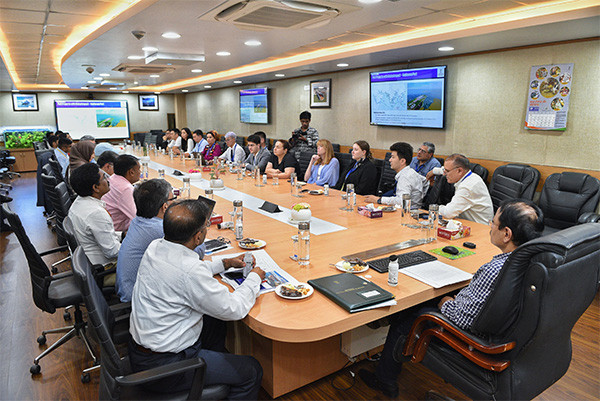
Separately, discussions with Mr. Anurag Bajpai, Additional Secretary (Defense Production), shed light on India’s advancements in its military-industrial complex. The delegation received insights into ongoing developments and future prospects within India’s defense manufacturing sector, underscoring the country’s commitment to enhancing its defense capabilities.
It was highlighted that India maintains collaborative partnerships with over 100 countries worldwide in defense. Emphasizing India’s openness to cooperation, Mr. Bajpai underscored the nation’s willingness to engage in joint ventures or supply arrangements for weapons, equipment, and ammunition with friendly nations.
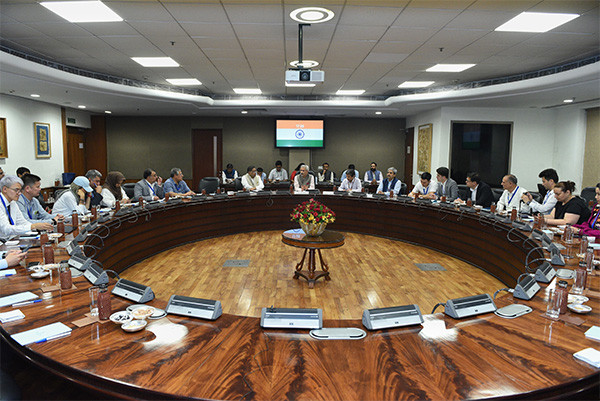
Minister of External Affairs Dr. Subrahmanyam Jaishankar welcomed the delegation of journalists, focusing their meeting on enhancing cooperation between India and Eurasian countries across various sectors. Dr. Jaishankar reiterated India’s commitment to fostering collaborative ties with all nations.
In addition to governmental engagements, the journalists visited several prominent Indian companies to gain insights into their operations and contributions to the nation’s economy.
Among these was ReNew, a leading provider of decarbonization solutions in India. The company showcased its significant role in developing renewable energy projects and highlighted its commitment to supporting local communities through its Environmental, Social, and Governance (ESG) initiatives. ReNew manages a robust asset base exceeding 15.6 GW, encompassing solar, wind, green hydrogen, carbon business, and digital solutions.
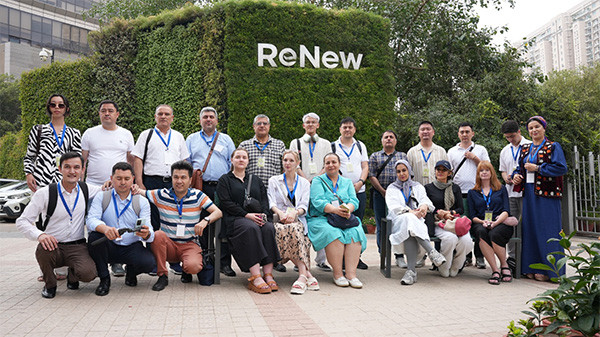
At the Federation of Indian Chambers of Commerce and Industry (FICCI) Ladies Organization, the delegation explored issues related to women empowerment and their increasing participation in business sectors. Since its establishment in 1983, FICCI Ladies Organization has empowered millions of women across diverse industries, advocating for gender equality and professional advancement.
During a meeting with Vijay Joshi, Editor-in-Chief and CEO of Press Trust of India (PTI), the journalists gained insights into PTI’s role as India’s premier private news agency. Discussions covered PTI’s operational challenges amidst evolving journalistic landscapes and the pivotal role of new technologies in shaping modern journalism practices.
In Hyderabad, the journalists toured Dr. Reddy’s Laboratories, a leading multinational pharmaceutical company renowned for producing a wide array of medical products exported globally. The visit included a firsthand look at the company’s state-of-the-art production facilities, providing a glimpse into the meticulous process of pharmaceutical manufacturing.
In addition to their engagements with government officials and corporate leaders, the journalists also explored innovative ventures within India’s burgeoning aerospace and technology sectors. One notable visit was to Skyroot Aerospace, a trailblazing private company specializing in manufacturing space-launch vehicles. Renowned for offering the world’s most cost-effective rocket launch services, Skyroot Aerospace focuses on deploying rockets to carry satellites into space, contributing significantly to India’s space exploration capabilities. The company plans in future send tourists to space.
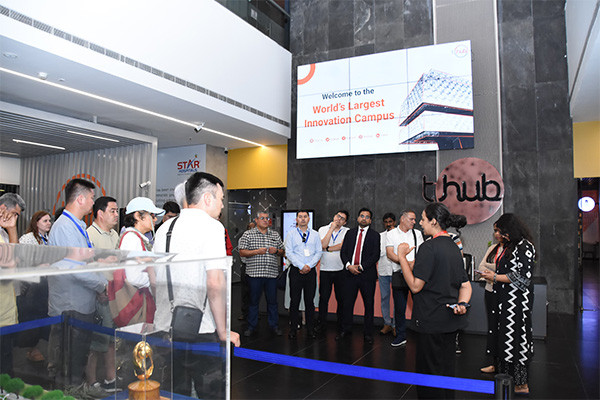
The delegation also visited T-Hub, a premier innovation hub in Hyderabad. Serving as a catalyst for entrepreneurial growth and technology innovation, T-Hub provides a dynamic platform for startups and innovators to collaborate and scale their ventures. This visit offered the journalists insights into India’s vibrant startup ecosystem and its role in fostering technological advancements across various industries.
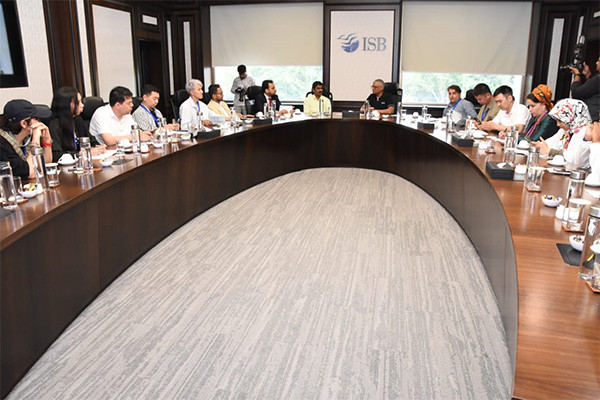
Additionally, the journalists explored the Indian School of Business (ISB), a globally recognized institution known for its excellence in management education and research. The visit provided an opportunity to understand ISB’s academic programs, research initiatives, and its impact on shaping business leadership in India and beyond.
The comprehensive visit to India proved enlightening for the delegation of Eurasian journalists, offering them a multifaceted understanding of the nation’s rich cultural heritage, dynamic business landscape, and strategic foreign policy initiatives. The visit deepened the journalists’ appreciation for India’s cultural diversity, its strategic outlook on global affairs, and its role as a hub of innovation and opportunity in the Eurasian context.